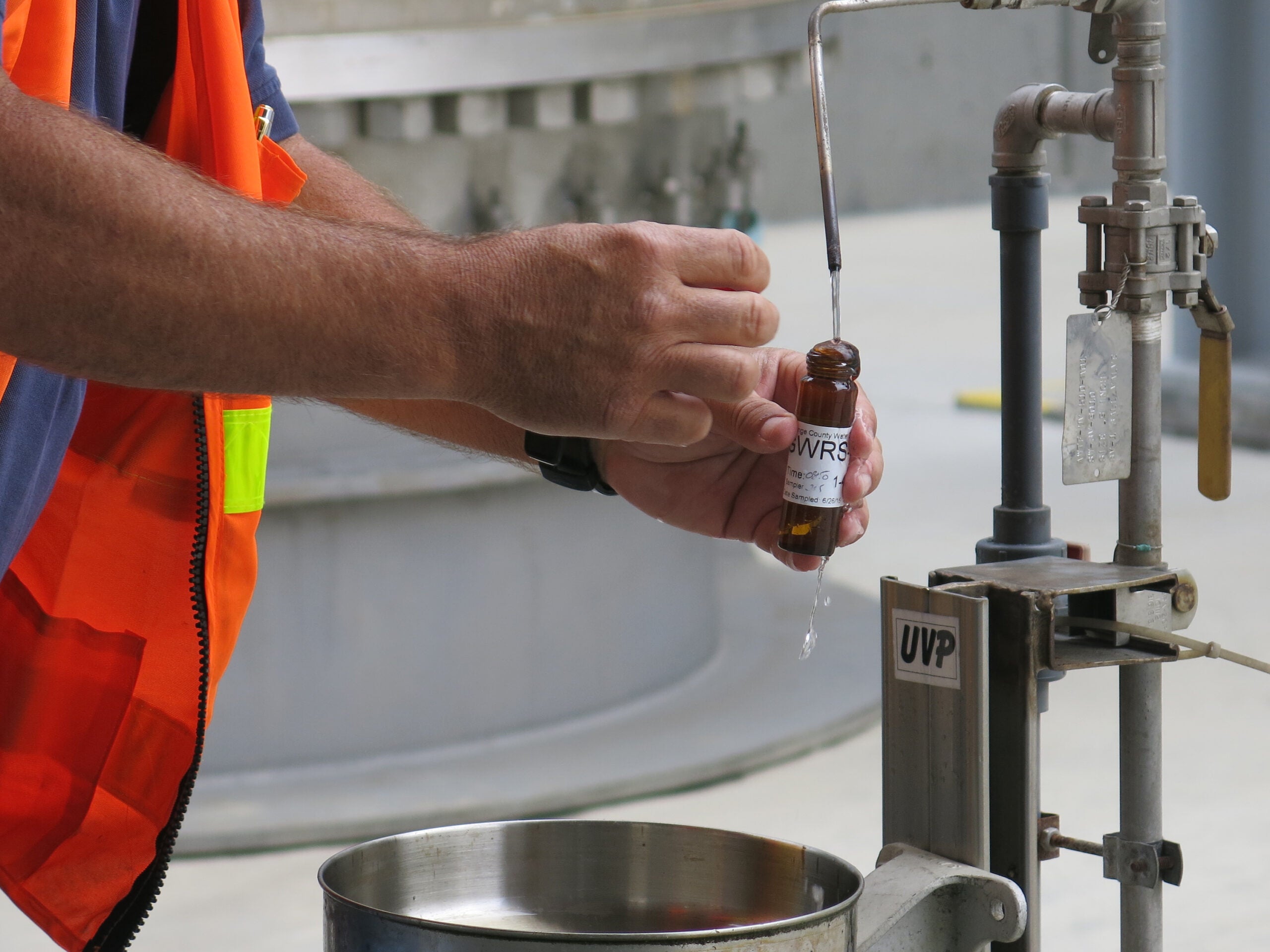The U.S. House Committee on Energy and Commerce held a hearing Wednesday on the risk of contamination and exposure to per-and polyfluoroalkyl substances known as PFAS.
The class of chemicals are used in everyday products like cookware, carpets and firefighting foam. The compounds have become a flashpoint as awareness has increased over the health hazards associated with the chemicals, causing lawmakers to introduce more than a dozen bills in the U.S. House to address risks related to them.
The U.S. Environmental Protection Agency doesn’t have drinking water standards for the chemicals, but it has issued an unenforceable lifetime health advisory of 70 parts per trillion (0.07 parts per billion).
Stay informed on the latest news
Sign up for WPR’s email newsletter.
More than 4,700 PFAS chemicals are known to exist, according to the National Institutes of Environmental Health Sciences.
Emily Marpe, of Petersburgh, N.Y., said during the hearing Wednesday that her son’s blood showed levels of 103 parts per billion of PFAS chemicals while her daughter had levels of 207 parts per billion. The average blood levels for PFOA and PFOS for those ages 12 and up are less than 7 parts per billion, according to a National Health and Nutrition Examination Survey.
“When you say there’s not enough studies, I’ve been diagnosed with thyroid disease. My daughter Gwen now has a pediatric endocrinologist. We’re suffering the health effects,” she said. “They’re already here.”
Concerns over the chemicals have also prompted action in Wisconsin.
The Wisconsin Department of Natural Resources has been working with the state Department of Health Services to create statewide, health-based water quality standards for PFOA and PFOS — two of the most widely studied PFAS chemicals. A DHS spokeswoman said Wednesday that work is ongoing.
Wisconsin is using the EPA’s health advisory to evaluate health impacts where PFAS has been found in drinking water.
Earlier this year, the Milwaukee Journal Sentinel reported on PFAS contamination of groundwater for residents nearby the Tyco Fire Products facility in Marinette. The site is among 16 locations that have been listed by the DNR as currently contaminated with PFAS from Madison to Superior. A recently released interactive map shows more than 600 sites nationwide known to be contaminated with the chemical.
In a statement, U.S. Sen. Tammy Baldwin, D-Wis., who is among lawmakers sponsoring PFAS legislation, said the chemicals are a serious health threat.
“The EPA needs to take stronger action to address them and thousands of similar chemicals that are contaminating our groundwater in Wisconsin and the Great Lakes,” she said. “The EPA needs to set an enforceable drinking water standard and so far the Trump administration has fallen short of taking the swift action that’s needed.”
PFAS chemicals have been known to cause a variety of adverse health effects, including liver damage and increased risk of thyroid disease. Some who testified at the hearing encouraged Congress to act, including Jamie DeWitt, associate professor at the Brody School of Medicine at East Carolina University.
“Of the 5,000 known PFAS, the vast majority have no associated research data or standards for human biomonitoring,” she said. “But it’s not really feasible from a time or resource perspective to test our way out of this crisis.”
She and others, including Erik Olson, health program director with the Natural Resources Defense Council, urged Congress to address PFAS as a class of chemicals rather than regulating each individual compound one by one.
“If you’ve got 4,700 chemicals and it takes (the) EPA years to regulate a single chemical, how many millenia is it going to take to regulate thousands of chemicals?” Olson said.
Brian Steglitz, manager of Water Treatment Services for the city of Ann Arbor, said the city has spent $850,000 to treat PFAS chemicals through a system using granular activated carbon. He said the best way to address contaminants is at their source.
“For those chemicals that are already in circulation, more effective controls are needed to ensure these chemicals are not allowed to enter our watersheds, as well as legislation that would require the polluter to cover the costs of abatement,” Steglitz said.
Tracy Mehan, with the American Water Works Association, said the EPA has authority under the Toxic Substances Control Act (TSCA) to address the issue.
“We urge Congress to ensure (the) EPA takes advantage of such existing authorities under TSCA to manage risk posed by PFAS compounds,” Mehan said.
He said the agency should provide a report in one year and update it every two years, describing the location of current and past PFAS production and use in the United States.
However, Jane Luxton, co-chair of the Environmental and Administrative Law Practice with law firm Lewis Brisbois, said Congress runs the risk of instituting unfunded mandates to state and local governments if it chooses a one-size fits all approach to regulating PFAS chemicals.
“Imposing blanket regulations on thousands of PFAS chemicals as some of the proposed legislation proposes to do when scientists agree we have, at best, limited information on most, risks losing focus on the highest priority concerns,” Luxton said.
Luxton added the move may result in litigation and runs the risk of overcorrecting and overwhelming the system.
Wisconsin Public Radio, © Copyright 2024, Board of Regents of the University of Wisconsin System and Wisconsin Educational Communications Board.




